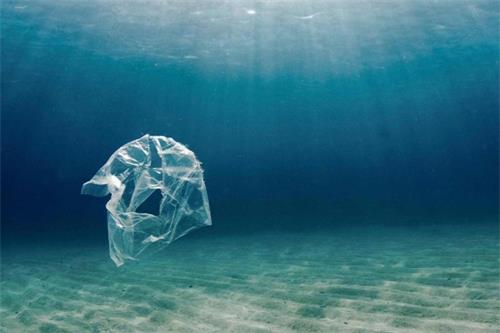
Over 60 years ago, Japan’s Minamata disease scandal shocked the world, with methylmercury as the culprit. Mercury, a highly toxic pollutant, spreads through air and water, dispersing globally. Today, mercury emissions have increased three to five times compared to pre-industrial levels, raising concerns about mercury pollution in surface marine ecosystems. Scientists generally believe that most oceanic methylmercury originates in the low-oxygen zones of the mesopelagic layer (100–1000 meters). However, growing research has drawn attention to methylmercury levels in the deep sea (below 1000 meters), suggesting that even deep-sea ecosystems might be affected by mercury pollution.
A recent study published in Nature Communications suggests that deep-sea regions such as the Mariana Trench may have mercury pollution linked to human activities, posing potential threats to deep-sea ecosystems. This research was conducted by Associate Professor Ruoyu Sun’s team from Tianjin University in collaboration with the Institute of Deep-Sea Science and Engineering of the Chinese Academy of Sciences. Using deep-sea sampling equipment, researchers collected biological samples from the Mariana Trench and analyzed mercury isotopes to trace the sources and pathways of methylmercury in the deep ocean.
For a long time, scientists believed that deep-sea regions, especially those below 1000 meters, remained untouched by human pollution and were among the last “pristine” areas on Earth. Mercury is a highly volatile element with both natural sources—such as volcanic eruptions and wildfires—and human sources, particularly coal combustion and mining. Once in the ocean, mercury is converted by bacteria into highly toxic methylmercury, which then bioaccumulates through the food chain, reaching top predators such as large fish and marine mammals, ultimately entering the human diet.
Previous studies estimated that about 60,000 tons of anthropogenic mercury exist in the ocean, mostly concentrated in the upper layers. Only a small fraction sinks into deep-water formation regions like the North Atlantic and Antarctic Bottom Water. Scientists believed that due to slow ocean circulation, mercury pollution would take a long time to reach deep-sea regions such as the Pacific Ocean, leading to the assumption that these waters remained largely unaffected.
However, advances in deep-sea exploration have allowed researchers to collect samples from the deepest parts of the ocean, including the Mariana Trench—the deepest known oceanic trench on Earth. Scientists deployed deep-sea samplers at depths ranging from 7,000 to 11,000 meters, capturing unique trench-dwelling species. They found that mercury concentrations in these deep-sea organisms were similar to those in fish from upper ocean layers, with matching mercury isotope signatures. This suggests that methylmercury in the deep sea may originate from surface waters, sinking through particulate matter. The process involves surface-layer methylmercury undergoing photodegradation, mixing with unaltered mesopelagic methylmercury, and eventually settling into the deep-sea food chain through sedimentation.
By analyzing mercury isotopes in trench organisms, the research team discovered that the methylmercury found in deep-sea creatures of the Mariana Trench closely resembles that in fish from shallower Pacific waters. Evidence suggests that this mercury could have entered the ocean through human activities in recent decades. Although the study provides new insights into deep-sea mercury pollution, several questions remain unanswered.
First, while isotope analysis offers indirect evidence, directly measuring mercury concentrations in deep-sea water remains extremely challenging. Due to the very low mercury concentrations in seawater, existing technology struggles to achieve precise measurements, necessitating more advanced techniques to confirm the true extent of deep-sea mercury pollution.
Additionally, researchers have yet to determine the exact ratio of natural versus anthropogenic mercury in the deep sea through isotope analysis. Furthermore, other potential deep-sea mercury sources, such as hydrothermal vents and cold seeps, remain poorly understood. Future studies will require further sample collection to clarify the origins and pathways of mercury pollution in the deep ocean.

Heathcliff,Catherine
From Orphan to Avenger: The Spiritual Entanglement of Heathcliff and Catherine
In a desolate valley, surrounded by wind and snow, stood a solitary estate—Wuthering Heights. The master of the house, Mr. Earnshaw, brought home a homeless orphan and named him Heathcliff.

Nero,Poppaea
Love Destroyed by Desire: Nero, Poppaea, and the Fate of an Empire
Nero is undoubtedly one of the most controversial emperors. His name is often associated with negative labels, yet behind these shadows lies a love story both beautiful and tragic—his romance with Poppaea Sabina.

Science,Energy
The Mysterious Halo: Science Unveils the Invisible Energy World Surrounding Our Bodies
In many artistic works, deities or Buddha figures are often depicted with halos above their heads, symbolizing sanctity and divinity.


